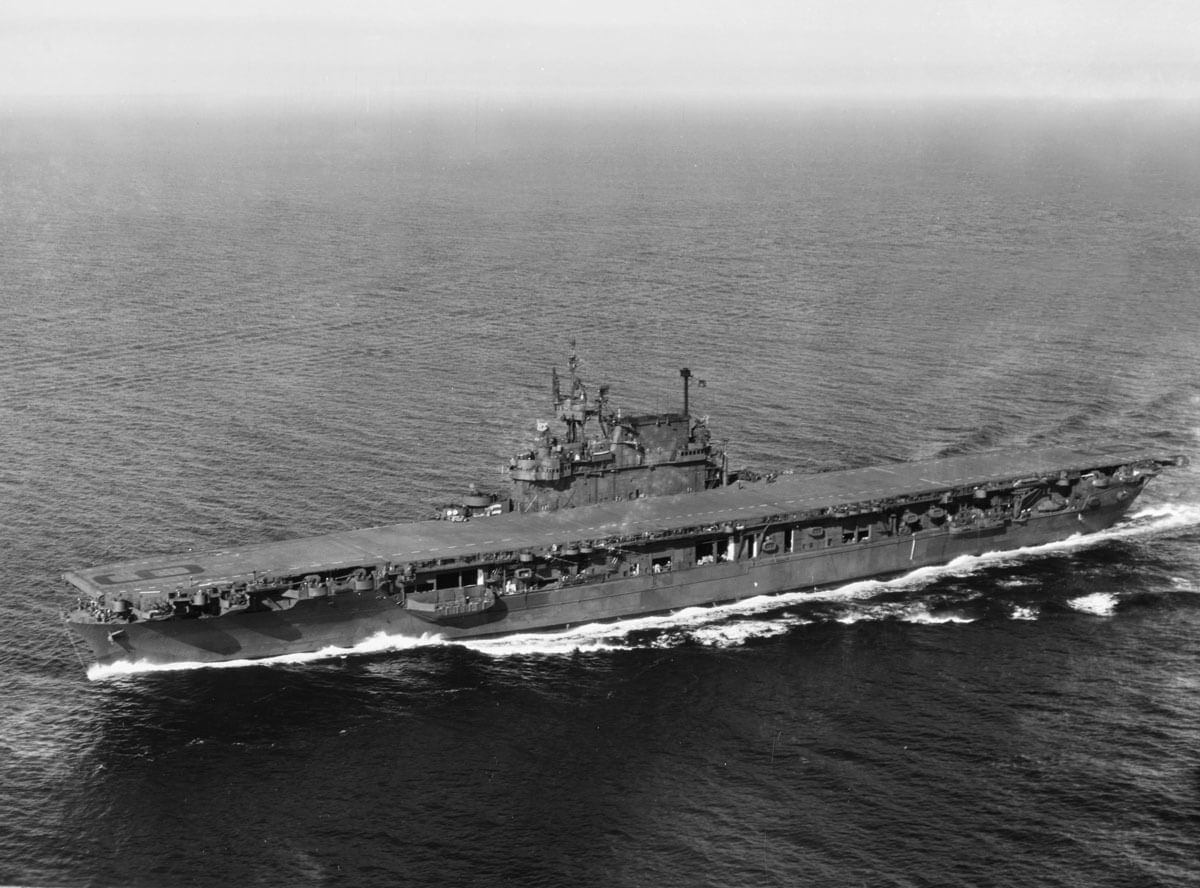Asbestos Exposure in USS Enterprise (CV-6)

Hull Number: CV-6
Type: Aircraft Carrier
Class: Yorktown
Built: Newport News, VA
About USS Enterprise (CV-6)
The nearly 20,000 ton, 825 foot-long USS Enterprise (CV-6) was built at Newport News Shipbuilding and Drydock Company (now Northrop Grumann) from 1934 to 1936. The Yorktown class aircraft carrier was commissioned in May of 1938 and is one of only three aircraft carriers to survive the war.
The “Big E” was first ordered to the Pacific Ocean in 1939 and would subsequently earn 20 (of a total of 22 issued) battle stars on its way to becoming a Navy legend.
Specifications
The USS Enterprise had a personnel capacity of over 2,200 people and could field 90 aircraft, ranging from fighters to torpedo bombers. It was powered by nine boilers which in turn spun four turbines.
The Big E could achieve speeds upward of 32 knots (about 37 mph) with a range of over 13,000 miles. It was armed with 24 anti-aircraft machine guns, four quadruple mount cannons, and eight single-mount cannons.
A Legend Is Born
Enterprise took its shakedown cruise to Rio De Janeiro, Brazil in May of 1938. Exercises in the Caribbean with sister ship Yorktown took place January 1939 under the command of Rear Admiral William F. Halsey and Captain Charles A. Pownall. Four months later, Enterprise was ordered to San Diego to join the Pacific fleet.
The ship would remain in continuous service for the next 2 years, with only brief maintenance breaks. Enterprise was transferred to Pearl Harbor in May 1940, which is where her storied history would begin.
When the Japanese attacked Pearl Harbor on December 7, 1941, Enterprise was already at sea. Once it got word of the attack, planes from Big E sank a Japanese submarine a few days later, the first enemy ship tit took down.
Upon returning to Pearl Harbor, Enterprise became the primary vessel of the U.S. Navy to stop further Japanese advancement in the Pacific.
Doolittle Raid
The first big battle Enterprise was involved in was the Doolittle Raid. This was the first direct strike on Japan by the U.S. in World War II. It was ordered by President Franklin Roosevelt in the wake of national outrage surrounding Japan’s attack on Pearl Harbor.
Heavy losses of aircrafts were expected, but military leaders saw the positives that could come from a relatively successful mission.
The only way the mission would work, since no U.S. base was close to Japan, was to position aircraft carriers 300 miles off the shores of the island nation. Enterprise would get the call, and on April 8, 1942, set sail from Pearl Harbor with two escort cruisers, a tanker, and four destroyers.
It was April 18 when Lieutenant James Doolittle and his crew dropped bombs over Tokyo, Kobe, Nagoya, and Osaka. Planes from the Enterprise subsequently took down several Japanese ships that had learned of its location after the Doolittle strike commenced.
Though every plane under Lieutenant Doolittle’s command was lost, and the damage inflicted on Japan was negligible, he was promoted to Brigadier General when the battle concluded.
Overall morale throughout the country was boosted significantly despite the heavy losses, as the raid was seen as revenge for Pearl Harbor by many Americans.
Subsequent Missions
The Battle of Midway was supposed to be Japan’s revenge for the Doolittle raid, but it was a turning point in naval superiority between the two super powers. USS Enterprise once again was at the forefront of another important Pacific Theater of Operations conflict.
It was June 4, 1942 when the fierce battle on the tiny Pacific island commenced. Planes from USS Enterprise are credited with bombing and destroying Japanese aircraft carriers Kaga and Akagi, and later fatally damaged Hiryu.
The Japanese lost a total of 322 aircraft in the battle, four total aircraft carriers and 5,000 sailors. These heavy losses stopped Japan’s advancement throughout the Pacific and cleared the path for more American military operations in Tokyo.
Enterprise saw action in Guam, the Marinas Island, Truk and Saipan from 1943 to 1944. The Battle of the Phillipine Sea is widely considered the largest air battle in the Pacific during World War II. The U.S. won it by the numbers, as the Japanese lost 426 aircraft to the U.S.’s 130.
The Battle of Leyte Gulf, Okinawa, and Iwo Jima round out this storied aircraft carrier’s historical run with the U.S. Navy.
Asbestos And USS Enterprise
Shipyards workers who built USS Enterprise, along with World War II Navy veterans who served on the carrier should see a doctor right away if they are experiencing symptoms of mesothelioma.
Symptoms can include a chronic cough, trouble breathing, unexplained weight loss, and chest pain. If you’ve been diagnosed with mesothelioma, contact an experienced attorney to learn your options for compensation.
The sooner you are diagnosed, the more treatment options that will be available. Asbestos was used extensively on shipyards through the 1960s. The latency period of mesothelioma can be 15-60 years.
